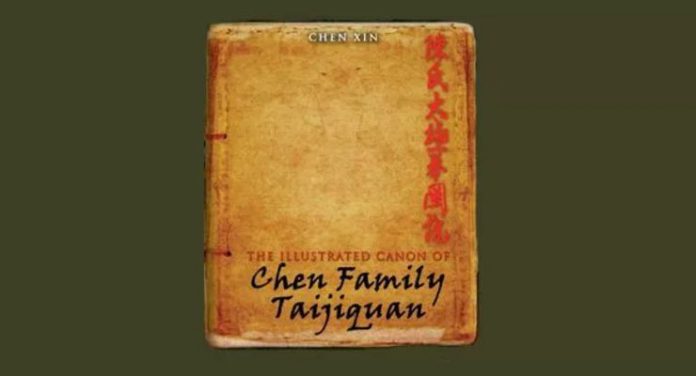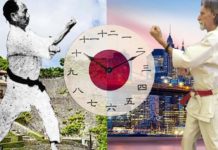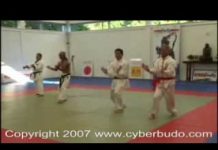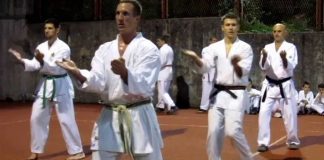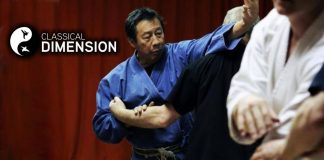The last of a series of exercises developed by Jou Tsung Hwa at the Taiji Farm, the aim of these subtle, precise, and intensive movements is to transform one’s Taiji from the hand method to one in which the limbs and body move simultaneously and in proportion to one another.
Form, push hands, escapes from holding techniques, and the ability of the body to adapt to situations even before stepping, are some of the improvements noticeable through the use of the torso method. Another definition of this would be whole body awareness.
Whereas most exercises will present a challenge with balance when performed on one foot, these exercises will often present a challenge of balance even when both feet are on the surface.
With the feet more than shoulder width apart and basically on a line with one foot flat and the other foot often placed with the heel raised and the body turning gradually directly to the left and right, balance can be difficult. Especially with the hands and arms stretched out to the max on left and right sides of the body at shoulder level coordinated with the contraction and expansion of the abdomen. When you turn the toe of the flat foot outward to get more of a stretch, then balance becomes even more of an issue.
To perform these movements on a regular basis without listening to music, would be sheer torture. Using some earphones for performing these exercises for at least an hour adds a sense of enjoyment to the struggle of a strict discipline
For single-foot exercises, the toes of the planted foot should be pointed more to the front than to side.
The following exercise is a variation of several in which one foot is flat on the surface while the other foot is placed with the heel raised and the front of the foot is on the surface. Both feet on a horizontal line approximately shoulder width.
Two hands can be used with just the arm and palms rotating or just one hand. Both arms can also diagonally away from and above the head, or just one arm, while the other arm can rest gently on the abdomen.
Standing on the left leg with the left arm placed parallel with the left leg at shoulder level, the body faces forward with the left facing up, and the left Palm facing diagonally forward (towards the right). The right heel is slightly lifted from the surface with the right hand placed on the abdomen to monitor the pulling in of the abdomen as the body turns towards the right, with the extended (right) leg and foot rotating sideways from initially facing the surface, while the left palm gradually turns upward facing directly upwards, upon the completion of pulling in the abdomen.
The motion is then reversed to arrive at the original position, with the abdomen relaxed, the body facing forward, the top of the right foot completely facing upwards, the left palm facing diagonally forward, and the abdomen relaxed.
The body now turns to the left fingers which are still parallel with the left foot, while the left palm turns to face the surface as the abdomen moves from relaxation to expansion, the right hand remaining on the abdomen and the right heel now moving towards the right rear. Reverse this motion and return to the original position, completing the exercise.
If Jou Tsung Hwa was asked at that time to display or to say what Taiji form best expresses the principles of the torso method, his answer would be Chen 1.
The Chen 1 developed by him in many ways is unique in that there are many of what can be called leg raises or leg circling maneuvers. There are also elements of the Yang and Hao(Wu) forms in the Chen 1of Mr. Jou. Certain moves have also been replaced by moves unrecognizable in traditional Chen’s Taiji. This makes the form slower, taking more time to perform.
In a more advanced stage of practicing the torso method exercises, the entire foot can be raised off the surface, rotating in the air.
This is just one practice from what I have named the torso method exercises.
I would like to thank Bob Arietta and Mike Goldstein for teaching me these exercises, and all of the wonderful students of the Taiji genius, Jou Tsung Hwa.

